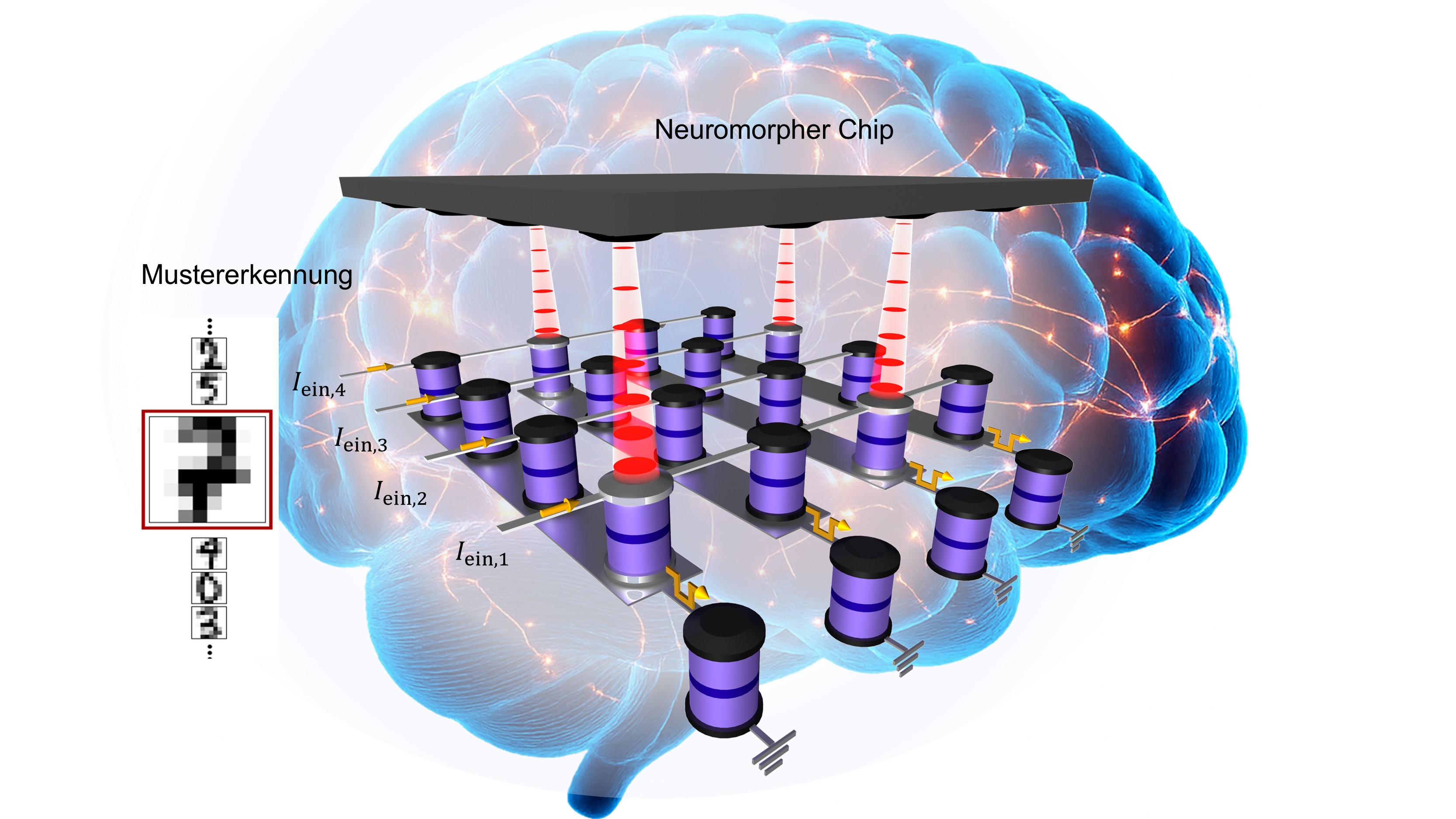The rapid development of artificial intelligence (AI) poses challenges to today's computer technology. Conventional silicon processors are reaching their limits: they consume large amounts of energy, the storage and processing units are not interconnected and data transmission slows down complex applications. As the size of AI models is constantly increasing and they are having to process huge amounts of data, the need for new computing architectures is rising. In addition to quantum computers, focus is shifting, in particular, to neuromorphic concepts. These systems are based on the way the human brain works.
This is where the research of a team led by Dr. Tahereh Sadat Parvini and Prof. Dr. Markus Münzenberg from the University of Greifswald and colleagues from Portugal, Denmark and Germany began. They have found an innovative way to make computers of tomorrow significantly more energy-efficient. Their research centres around so-called magnetic tunnel junctions (MTJs), tiny components on the nanometre scale. "These components not only store information, they can even process it, just like nerve cells. This makes them ideal for novel computing concepts that are based on the way the brain works, what we call 'neuromorphic computing'," explains Dr. Tahereh Sadat Parvini, postdoc at the University of Greifswald and co-author of the paper that was recently published in Communications Physics.
The research team developed a hybrid opto-electrical excitation scheme that combines electrical currents with short laser pulses. This made it possible to generate particularly high thermoelectric voltages in the MTJs - an important prerequisite for the targeted simulation of synapse behaviour.
The physicists were able to identify three particularly remarkable properties: Firstly, the generated voltage can be adjusted flexibly depending on the electrical current, similar to the weight of a synapse in the brain. Secondly, spontaneous "spike" signals occurred, which are similar to the way information is exchanged between nerve cells. Thirdly, in computer simulations, a simple neuromorphic network based on this technology already achieved a recognition accuracy of 93.7 % for digits that had been written by hand
"Our results show that MTJs with optical-electrical control represent a compact and energy-saving platform for the next generation of computing," summarises Prof. Dr. Markus Münzenberg. "As the technology is compatible with today's semiconductor technology, we believe, that in the future, it could be used in everyday devices as well as high-performance computers."
Further information
Publication: Oberbauer, F., Winkel, T.J., Böhnert, T. et al. Magnetic tunnel junctions driven by hybrid optical-electrical signals as a flexible neuromorphic computing platform. Commun Phys 8, 329 (2025). https://doi.org/10.1038/s42005-025-02257-0.
Working group: https://physik.uni-greifswald.de/en/research-groups/interface-and-surface-physics-prof-markus-muenzenberg/team/team/group-members/markus/
The publication was produced in cooperation with colleagues from the Max Planck Institute for the Science of Light, Erlangen, INL - International Iberian Nanotechnology Laboratory, Braga, Portugal and the Electrical and Computer Engineering Department, Aarhus University, Aarhus, Denmark. The project is part of the EU-funded SpinAge Consortium, as part of the European Union's Horizon 2020 project H2020-FETOPEN https://spinage-fet.eu/, whose ultimate goal is to produce a neuromorphic chip in a semiconductor fab.
Contact at the University of Greifswald
Dr. Tahereh Parvini
Institute of Physics
Felix-Hausdorff-Straße 6, 17489 Greifswald
tahereh.parviniwmi.badwde
Prof. Dr. Markus Münzenberg
Institute of Physics
Felix-Hausdorff-Straße 6, 17489 Greifswald
Tel: +49 3834 420 4780
markus.muenzenberguni-greifswaldde


